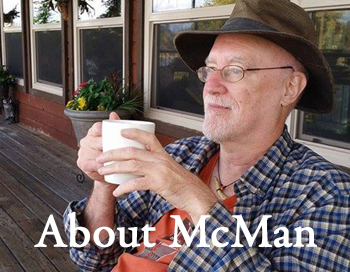
Recovery
 HAPPINESS - OPTIMISM AND FLOW
HAPPINESS - OPTIMISM AND FLOW


THE MAJOR thing I observed in my seven years with support groups were individuals on the cusp of recovery who could not push through that final barrier to lives they considered worth living. What was going on? Yes, a lot of these people were still depressed and also dealing with other issues, but they were hardly incapacitated. Moreover, to a person they were all compliant with their meds and therapies, were smart about spotting their emotional triggers, and did not outrageously violate commonsense lifestyle guidelines.
Yet it was as if they could not survive out in the wild. What was going on?
Optimism vs Pessimism
I do not profess to have any answers, but Martin Seligman's 2002 book, "Authentic Happiness," got me thinking. Perhaps we're paying attention to all the wrong things. We tend to put all our energy into digging ourselves out of the hole or not falling back in. But we are rarely focused on that distant mountain we need to climb. Mountain? What's a mountain?
It's obvious that people with pessimistic and optimistic world views think a lot differently, and Dr Seligman, himself, acknowledges that his own default setting is pessimistic. Pessimism, of course, has its virtues, and Dr Seligman jokes that it requires a pessimist such as himself to write on optimism.
First, optimism is not to be confused with our popular notion of "positive thinking." Dr Seligman, whose thinking is very much influenced by the cognitive therapy of Aaron Beck, sees no value in viewing events in ways that fly in the face of unpleasant reality.
In other words, if you find yourself in a Monty Python movie, fastened to a cross, then whistling "Always Look on the Bright Side of Life" would best fall into the type of behavior we classify as delusional.
Indeed, as one of my blog readers pointed out, those who persistently view the same glass of water as half-full rather than half-empty may in fact be struggling a lot harder with common misfortunes that do not fit into their positive world view.
Here's where Dr Seligman is coming from:
Optimists and pessimists, he says, do have totally different ways of assigning blame or credit to how events turn out. For instance, an optimist who has a good day at work will internally credit his or her own efforts. The pessimist is likely to ascribe his or her good fortune to dumb luck. Conversely, if things go badly, the optimist will write off the disappointment to a bad day. The pessimist will shoulder all the blame.
SIGN UP FOR MY FREE EMAIL NEWSLETTER
Not surprisingly, by being adept in patting themselves on the back and rolling with the punches when the occasion demands, optimists fare better in all endeavors save one. That field is law. Lawyers, of course, are specialists in helping their clients avert disaster, which means they need to spot negatives that no one else sees. Natural pessimists, then, are born lawyers. (I have a law degree - I can vouch for this.)
Of course, lawyers have the highest depression rates of any profession or vocation, as well. Food for thought.
Flow
"Flow" is when time stops for you, when you find yourself doing exactly what you want to be doing and never wanting it to end. Of all things, flow involves the absence of emotion. As Dr Seligman describes it:
It is the total absorption, the suspension of consciousness, and the flow that defines liking these activities - not the presence of pleasure. Total immersion, in fact, blocks consciousness, and emotions are completely absent.
We can all relate to the experience, even if we don't have a name or explanation for it. In my 2006 book, "Living Well with Depression and Bipolar Disorder," I conclude with:
Writing is what helped bring me back from the dead. For me, it is a healing activity. If I were a basketball player, I would be shooting hoops; if I were a gardener, I would be out with the petunias. Healing is about finding something that makes you feel alive and doing it. When I am in full flight, there is no time and space. The sun takes it's leave, booming music falls mute, and the steaming hot cup of tea by my side is stone cold when I pick it up a minute later. ...
Dr Seligman draws from the work of Mihaly Csikszentmihalyi of Claremont University, who has interviewed thousands of people worldwide on their high gratifications, from motorcycle club riders to chess players to sculptors to assembly line workers to ballerinas.
The task may not be fun, per se, but it is challenging, with clear goals and immediate feedback. There is a sense of deep effortless involvement and control. Sense of self vanishes. Time stops.
In one study, Dr Csikszentmihalyi tracked two populations of "high-flow" and "low-flow" teenagers. The high-flow kids had hobbies, engaged in sports, and spent a lot of time on their homework. The low-flow kids hung out at malls and watched TV a lot. On all measures of psychological well-being but one, the high-flow kids did better. The exception? The high-flow kids thought their low-flow peers were having more fun.
Being in the flow, contends Dr Seligman, is what helps produce gratification, not just fleeting pleasure. The catch is you have to put in the effort. As Dr Seligman describes it:
The gratifications produce flow, but they require skill and effort; even more deterring is the fact that because they meet challenges, they offer the possibility of failing. Playing three sets of tennis ... takes work - at least to start. The pleasures do not; watching a sitcom, masturbating, and inhaling perfume are not challenging.
Quoting Dr Csikszentmihalyi:
Pleasure is a powerful source of motivation, but it does not produce change; it is a conservative force that makes us want to satisfy existing needs, achieve comfort, and relaxation. [Gratification] on the other hand is not always pleasant ...
It may not be easy to make the effort in the midst of a force-nine depression, but I do know that writing helped boot me out of a severe depression many years ago. Writing, of course, happens to be my key strength (and obsession). More on that ...
Go to: Happiness - Playing to Our Strengths ...
Previous Happiness articles: Happiness: Life's Greatest Challenge * Happiness: Putting in the Effort
Published as a series of blogs 2009-2010, reworked into a series of articles Jan 26, 2011, reviewed Dec 5, 2016
NEW!
Follow me on the road. Check out my New Heart, New Start blog.












